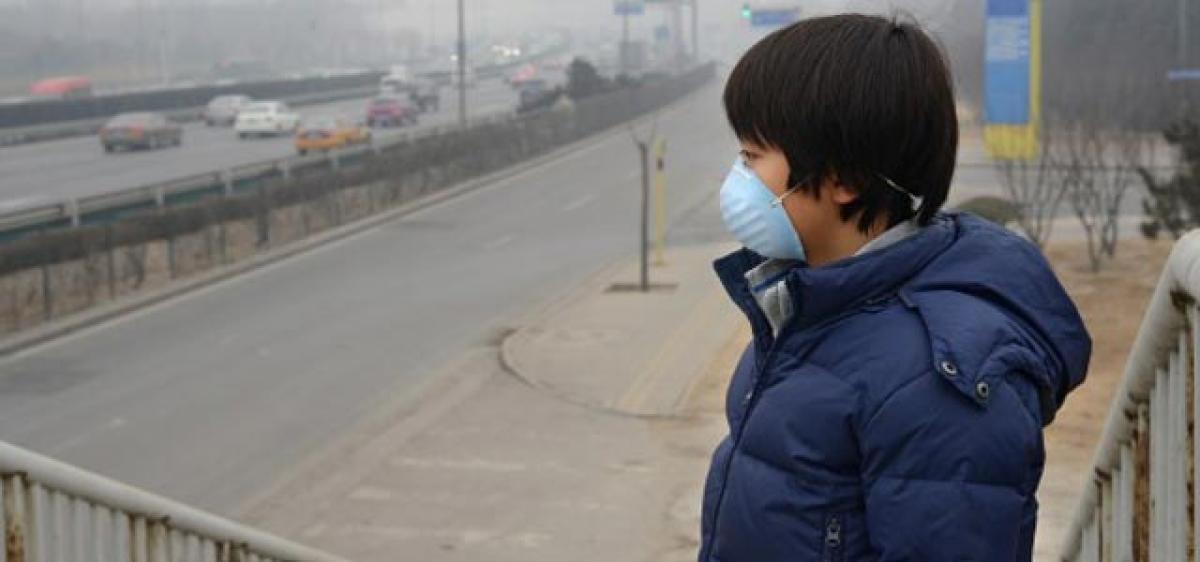Live
- HMPV Outbreaks Spark Global Health Concerns: What You Need to Know
- Gautam Gambhir Faces Criticism Over Tactical Errors in Australia Tour
- CM Revanth Reddy Announces Surprise District Tours Starting January 26
- Telangana's TOMCOM Invites Applications for Driver Jobs in Germany
- Calcutta HC rejects plea by rights body for stall allotment at Kolkata Book Fair
- Bengaluru Beer Prices to Rise by Up to 20% Starting January 20
- My Fans Are Like Disciplined Soldiers: Nandamuri Balakrishna
- Adani Group raises Rs 4,850 crore after selling 13.5 pc stake in Adani Wilmar
- "Jogulamba Gadwal Health Officials Assure Public: No Panic Over HMPV Virus".
- "Charity and Annadanam Program Held on BOSS Hanumanthu Naidu’s Birthday".
Just In
Air pollution linked to respiratory, cardiovascular deaths


In the largest epidemiological study conducted in the developing world, researchers found that as exposures to fine particulate air pollution in 272 Chinese cities increase, so do deaths from cardiovascular and respiratory diseases.
In the largest epidemiological study conducted in the developing world, researchers found that as exposures to fine particulate air pollution in 272 Chinese cities increase, so do deaths from cardiovascular and respiratory diseases. The researchers reported their results in “Fine Particulate Air Pollution and Daily Mortality: A Nationwide Analysis in 272 Chinese Cities,” published online ahead of print in the American Thoracic Society’s American Journal of Respiratory and Critical Care Medicine.
“Fine particulate [PM2.5] air pollution is one of the key public health concerns in developing countries including China, but the epidemiological evidence about its health effects is scarce,” said senior study author Maigeng Zhou, PhD, deputy director of the National Center for Chronic and Non-communicable Disease Control and Prevention, Chinese Center for Disease Control and Prevention. “A new monitoring network allowed us to conduct a nationwide study to evaluate short-term associations between PM2.5 and daily cause-specific mortality in China.”
The findings reveal that the average annual exposure to PM2.5 in the Chinese cities was 56 micrograms per cubic meter (µg/m3) well above the World Health Organization air quality guidelines of 10 µg/m3. Each 10 µg/m3 increase in air pollution was associated with a 0.22 percent increase in mortality from all non-accident related causes. A 10 µg/m3 increase in air pollution was associated with 0.29 percent increase in all respiratory mortality and a 0.38 percent increase in chronic obstructive pulmonary disease (COPD) mortality.
Further, according to the researchers the mortality was significantly higher among people age 75 and older and among people with lower levels of education. The association between PM2.5 levels and mortality was stronger in cities with higher average annual temperatures.The researchers speculate that differences in educational attainment may result in environmental health inequalities and access to health care that affect mortality. In warmer cities, the authors hypothesize residents may spend more time outdoors and open windows, increasing their exposure to PM2.5.
The study also suggests a weaker association between increases in PM2.5 and mortality than studies conducted in Europe and North America. They suggest a number of possible explanations for this difference, including that in most Chinese cities there was a plateauing of mortality at the highest levels of pollution and the components of PM2.5 pollution in China may be less toxic than the components in Europe and North America. Crustal dust from arid lands and construction make up more PM2.5 pollution in China than it does in Europe and North America.
In 2013 China began introducing PM2.5 monitoring in urban areas. The current study analyzed available data between 2013-15. For nearly half the cities in the study, there was only one year of PM2.5 data available, and the authors note that a limitation of their study is that it does not look at the cumulative effect of PM2.5 over many years. “Our findings may be helpful to formulate public health policies and ambient air quality standards in developing countries to reduce the disease burden associated with PM2.5 air pollution,” said study co-author Haidong Kan, MD, professor of public health at Fudan University in China.

© 2025 Hyderabad Media House Limited/The Hans India. All rights reserved. Powered by hocalwire.com






